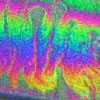-

-
Courses
Find courses by:
Collections
Cross-Disciplinary Topic Lists
- About
- Donate
- Featured Sites

 |
|
By the end of this lecture, you should:
› View/hide answer
If a small microphone detects the unwanted noise, some of it can be electronically multiplied by -1 by an amplifier, and joined with the signal of music going into the headphone. Multiplication by -1 is a 180º phase shift, so when the sound of this treated noise joins the sound coming from outside, cancellation will result. The music signal would be unaffected. This technology is now in common use.
› View/hide answer
Dark fringes arise when there is destructive interference, that is to say, the waves are out of phase by π (i.e. 180º), which corresponds to one-half wavelength (λ/2). When the distance from one slit to the observing point is λ/2 greater than the distance from the other slit to that point, this condition will apply and total darkness will result. Near those points, the cancellation would not be total but partial darkness would result. Dark fringes also appear when the waves are out of phase by any larger odd multiple of &pi or a pathlength difference of any odd multiple of λ/2.
› View/hide answer
Light travels more slowly through glass than through air. Since the light frequency will not change, the wavelength &lambda must be smaller inside the glass. In the form of the sinusoidal traveling wave equation \[y = A\sin \left[ {\frac{{2\pi }}{\lambda }(x - vt)} \right]\] the same value of \(x - vt\) needed to cause the phase to advance by some amount. This means that the light on the glassed slide of the slit has less distance to travel to get in the same phase change. Correspondingly, light at a certain angle from the slit with the glass will have a larger phase change at the screen than light at the same angle from the uncovered slit. The whole diffraction pattern will thus shift toward the side that has the glass. For example, the central bright fringe will not occur straight ahead at an angle of 0º (as is the case for two identical slits) but will instead appear at a small angle in the direction toward the slit with the glass.
› View/hide answer
If the n value of the coating is intermediate between that of air and glass, a 180º phase shift occurs for reflection at both at the air-coating interface and the coating-glass interface. To eliminate reflection, it suffices that the coating delay the light reflected from the glass surface by a total of λ/2. A coating whose thickness is λ/4 (of the wavelength within the coating material) will do this since the reflected light traverses the coating twice. In practice, this condition can be approximately met for a fairly wide wavelength range, but not for all, and especially if some tilt makes the length calculations wrong. For this reason, optimization is not usually based on blue light, but on the yellow wavelength more prevalent in sunlight and similarly colored artificial light. So, a good test to see if an antireflection coating is present is to look for reflection of blue light.